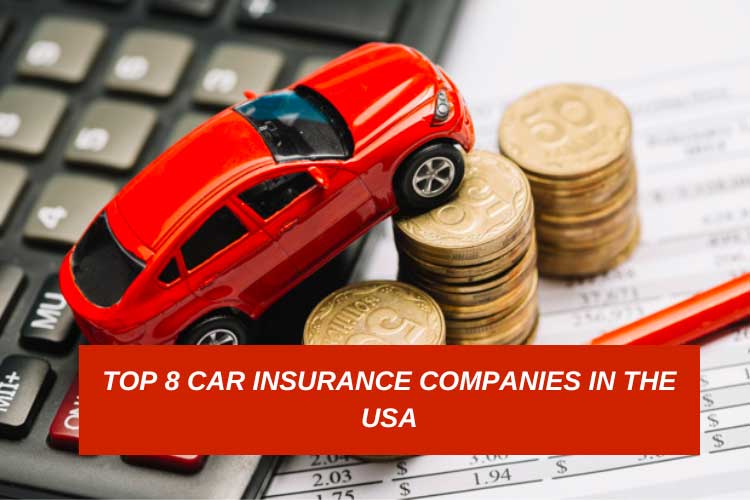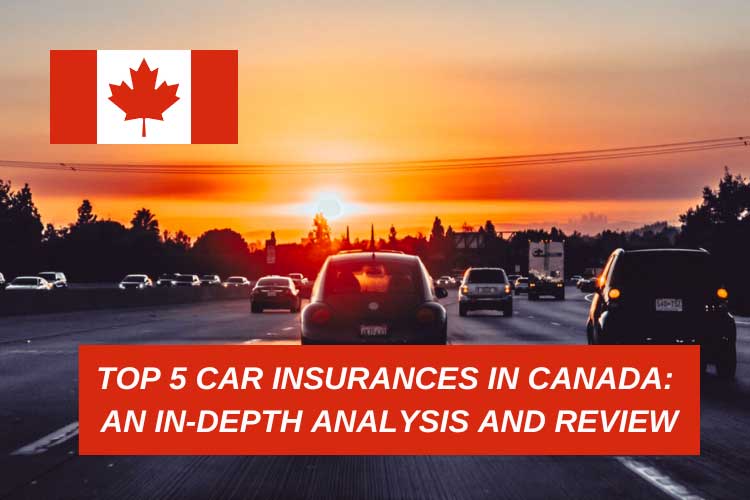Cost of Car Insurance Per Year in the USA
In the United States, car insurance is not a luxury; it’s a legal necessity. With nearly all states mandating some form of auto insurance coverage, understanding the average costs associated with these requirements can help you navigate this essential aspect of vehicle ownership. According to a comprehensive analysis by Forbes Advisor, the average cost of full coverage car insurance in the U.S. is around $1,601 per year. If you opt for state minimum coverage, the average cost decreases to approximately $513 per year.
While these figures provide a snapshot of what you might expect to pay, it’s important to note that car insurance rates are not one-size-fits-all. Various factors come into play in determining the cost of your policy.
Also see: Top 8 Car Insurance Companies in the USA
Determining the Average Cost of Auto Insurance
So, what influences the average cost of auto insurance? The calculation of insurance premiums is a nuanced process that takes into account multiple variables.
- Age: Younger drivers often face higher premiums due to their perceived risk and lack of driving experience. Conversely, older drivers usually benefit from lower rates.
- Company and coverage amount: Different insurance companies offer varying rates. The amount of coverage you choose also impacts your premium. As you might expect, more extensive coverage results in higher costs.
- Driving history: A clean driving record typically equates to lower premiums. In contrast, a history of accidents or violations can significantly increase your insurance costs.
- Gender: In some states, gender can affect your car insurance rate. Statistically, certain genders may be associated with higher risk.
- State: Each state has different minimum requirements for car insurance and different risk profiles, which can greatly influence the cost.
- Vehicle type: The make, model, and age of your car can impact your premium. More expensive or high-performance vehicles often come with higher insurance costs.
Each of these factors is meticulously evaluated by insurance companies when pricing their policies, which is why rates can vary so drastically from person to person. Understanding these elements can help you anticipate potential costs and find an insurance policy that best suits your needs and budget.
Remember, the average cost of car insurance provides a general overview but your individual circumstances will ultimately dictate what you pay for coverage.
Cost of Car Insurance Per Year in the USA: Understanding Car Insurance Coverage
To make an informed decision about car insurance, it’s crucial to understand the difference between full coverage and state minimum coverage.
Full coverage car insurance, though not a standardized term across the industry, generally refers to a policy that includes liability insurance, collision insurance, comprehensive insurance, and uninsured motorist coverage.
- Liability insurance covers the cost of injuries and property damage you cause to others in an accident. It also pays for your legal defense and any judgments or settlements if you’re sued.
- Collision insurance pays for damage to your car in an accident, regardless of who is at fault.
- Comprehensive insurance covers non-collision damage to your vehicle, such as damage from flooding or fire.
- Uninsured motorist coverage takes care of your and your passengers’ medical bills if you’re injured in an accident caused by an uninsured driver.
On the other hand, state minimum coverage, as the name suggests, only includes the bare minimum insurance required by law in your state. This coverage is typically limited to liability insurance and is much cheaper than full coverage. However, it doesn’t cover damage to your own vehicle.
Check : Top 4 Exceptional Student Health Insurance Plans for 2023 U.S
Cost of Car Insurance Per Year in the USA: Car Insurance Cost by Company
Insurance costs vary not just by individual circumstances, but also significantly among insurance companies. This is due to each company’s unique methodology for assessing risk and pricing policies, leading to a substantial difference in pricing.
For instance, when considering full coverage, the average cost among the analyzed companies are as follows:
- USAA: $1,141 per year
- Nationwide: $1,154 per year
- Geico: $1,237 per year
- State Farm: $1,486 per year
- Erie: $1,499 per year
- Travelers: $1,533 per year
- Auto-Owners: $1,632 per year
- Progressive: $1,844 per year
- Allstate: $2,206 per year
- Farmers: $2,277 per year
The difference is significant, ranging from $1,141 per year with USAA to $2,277 with Farmers – a difference of $1,136 per year for the same coverage.
For state minimum liability insurance, the average cost among companies starts as follows:
- USAA: $322 per year
- Auto-Owners: $356 per year
- Geico: $358 per year
- Erie: $427 per year
- State Farm: $463 per year
- Nationwide: $483 per year
- Allstate: $617 per year
- Progressive: $635 per year
- Travelers: $643 per year
- Farmers: $830 per year
Here, the prices start at $322 per year with USAA, and go up to $830 a year with Farmers, signifying a difference of over $500 for the same minimal coverage.
These price variations underscore the importance of shopping around and comparing auto insurance quotes. By taking the time to compare offerings from multiple companies, you can ensure that you’re getting the best coverage for your specific situation at the most competitive price. It’s critical to remember, when comparing quotes, ensure that you’re comparing the same coverage types and limits to get an accurate picture of the costs.
The Role of Collision and Comprehensive Coverage
While full coverage car insurance may seem costly compared to state minimum coverage, its benefits are expansive. Full coverage policies include collision and comprehensive coverage, both of which provide protection beyond liability.
Collision coverage takes care of the repair or replacement costs of your vehicle if it’s damaged in an accident, regardless of who’s at fault. Comprehensive coverage, on the other hand, covers non-collision related damages to your vehicle, such as those caused by natural disasters, theft, or vandalism.
These additional coverages significantly increase the protection for your vehicle, which is reflected in the higher premium for full coverage car insurance. Moreover, if your car is leased or financed, your lender will usually require you to carry full coverage auto insurance to protect their investment.
State Influence on Car Insurance Costs
Your geographical location plays a critical role in determining your auto insurance rates. Insurance companies consider a myriad of location-specific factors when setting their rates.
For instance, they look at the number and cost of claims in your area. If your region has a high number of claims or the claims are typically expensive, this could lead to higher insurance premiums.
Weather conditions also factor into the equation. If your area is prone to severe weather events like hurricanes or flooding, it could increase the risk of damage to your vehicle, and consequently, the cost of your insurance.
Lastly, the population density of your state can influence your auto insurance rates. Urban areas, with their higher traffic volumes and increased likelihood of accidents, often have higher average car insurance rates compared to rural states with fewer drivers.
In short, while the average cost of car insurance provides a useful baseline, the actual cost can fluctuate significantly based on the state you live in and other location-specific factors. This underscores the importance of obtaining multiple quotes and considering all aspects of your situation when shopping for car insurance.
State Influence on Car Insurance Costs
Your geographical location plays a pivotal role in determining your auto insurance rates. Insurance providers consider a variety of location-specific factors when setting their prices:
- The number and cost of claims in your area: If your region has a high number of claims or the claims are typically expensive, this could drive up your insurance premiums.
- Local weather conditions: If your area is prone to severe weather events such as hurricanes or flooding, it could increase the risk of damage to your vehicle, leading to higher insurance costs.
- Population density: Densely populated areas, with more vehicles on the road, often have higher average car insurance rates due to an increased risk of accidents. Conversely, rural states with fewer drivers generally have lower average insurance rates.
Cheapest and Most Expensive States for Car Insurance
Understanding the cost variations across states can help you contextualize your own auto insurance rates. Here are the top five cheapest and most expensive states for full coverage and state minimum liability insurance:
Cheapest States for Full Coverage Car Insurance:
- Vermont: $1,066 per year
- Idaho: $1,143 per year
- New Hampshire: $1,149 per year
- Maine: $1,168 per year
- Ohio: $1,168 per year
Most Expensive States for Full Coverage Car Insurance:
- Florida: $3,301 per year
- Louisiana: $3,128 per year
- New York: $2,523 per year
- California: $2,521 per year
- Michigan: $2,495 per year
Cheapest States for Minimum Liability Car Insurance:
- Iowa: $275 per year
- Vermont: $278 per year
- Wyoming: $295 per year
- South Dakota: $301 per year
- Idaho: $341 per year
Most Expensive States for Minimum Liability Car Insurance:
- Michigan: $1,450 per year
- Florida: $1,286 per year
- New Jersey: $1,119 per year
- New York: $1,016 per year
- Delaware: $936 per year
As you can see, there’s a significant difference in cost between states, which reinforces the importance of understanding the specific factors that influence car insurance rates in your location.
Source : Quadrant Information Services
Cost of Car Insurance Per Year in the USA very importante
Understanding the average cost of car insurance per year in the USA is a valuable exercise for any driver. It’s essential to remember that numerous factors, including your age, driving history, gender, the state you live in, and the type of vehicle you drive, all come into play when calculating these costs. The type of coverage you choose, whether it’s full or state minimum liability, also has a considerable influence on the price you pay.
It’s also crucial to understand that car insurance rates can vary significantly among different insurance companies. As such, it’s recommended to take the time to compare quotes from various providers to ensure you’re getting the most comprehensive coverage for your needs at the most competitive price. When comparing these quotes, remember to ensure that you’re comparing the same coverage types and limits to get an accurate picture of the costs.
Ultimately, the goal is to find a balance between cost and coverage that suits your specific needs and budget. Being informed about the average costs and factors influencing these costs can help you make a more educated decision about your car insurance.








